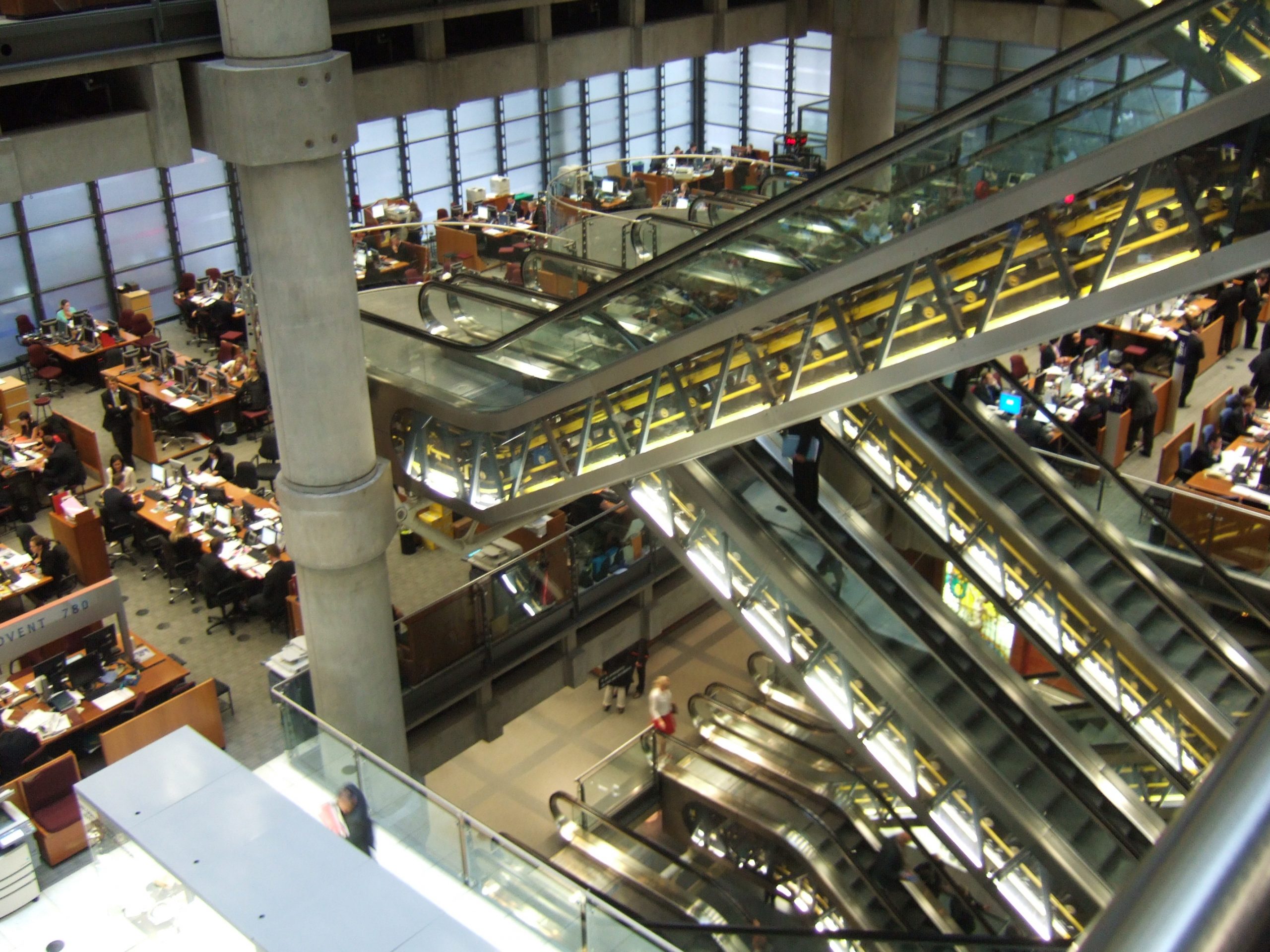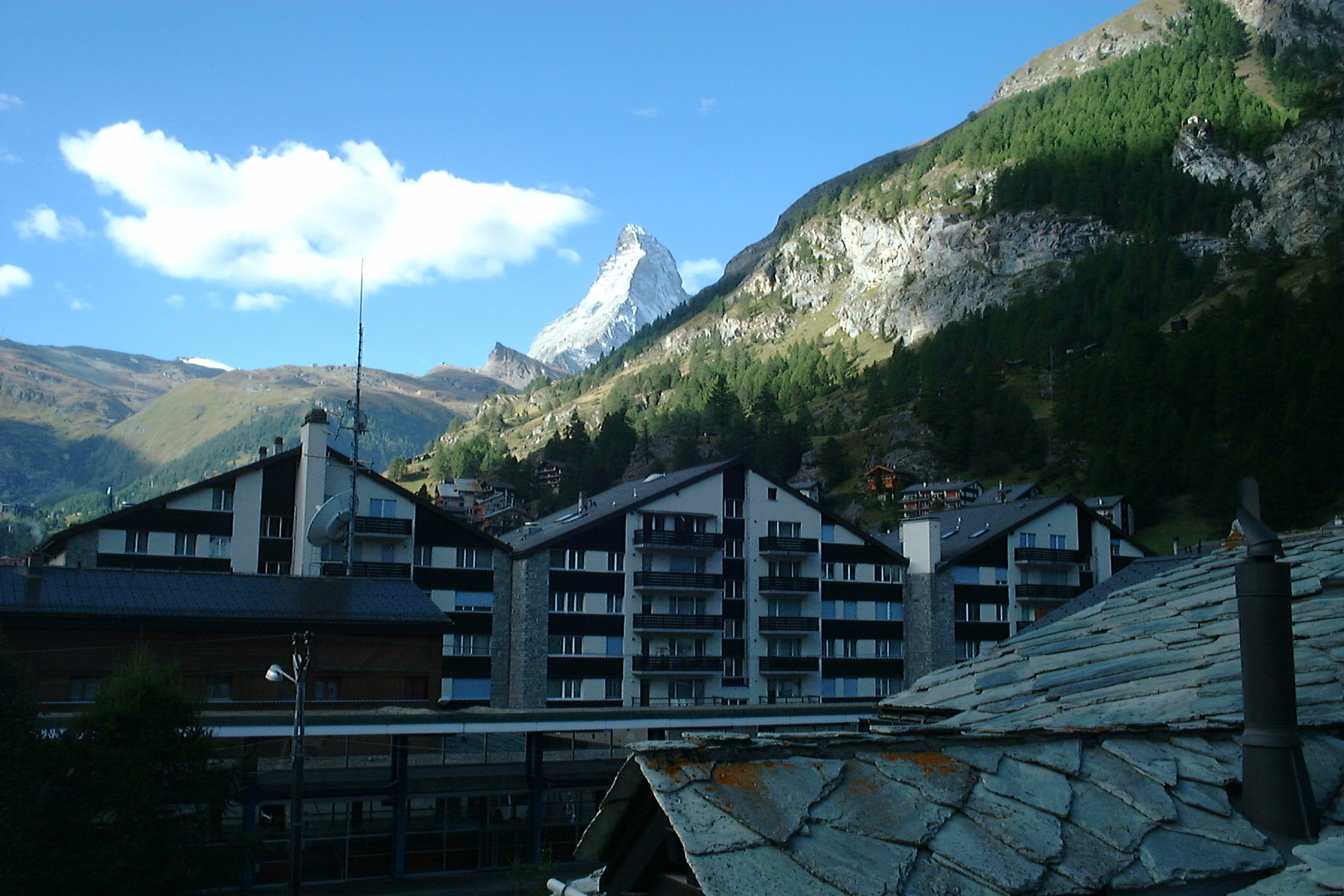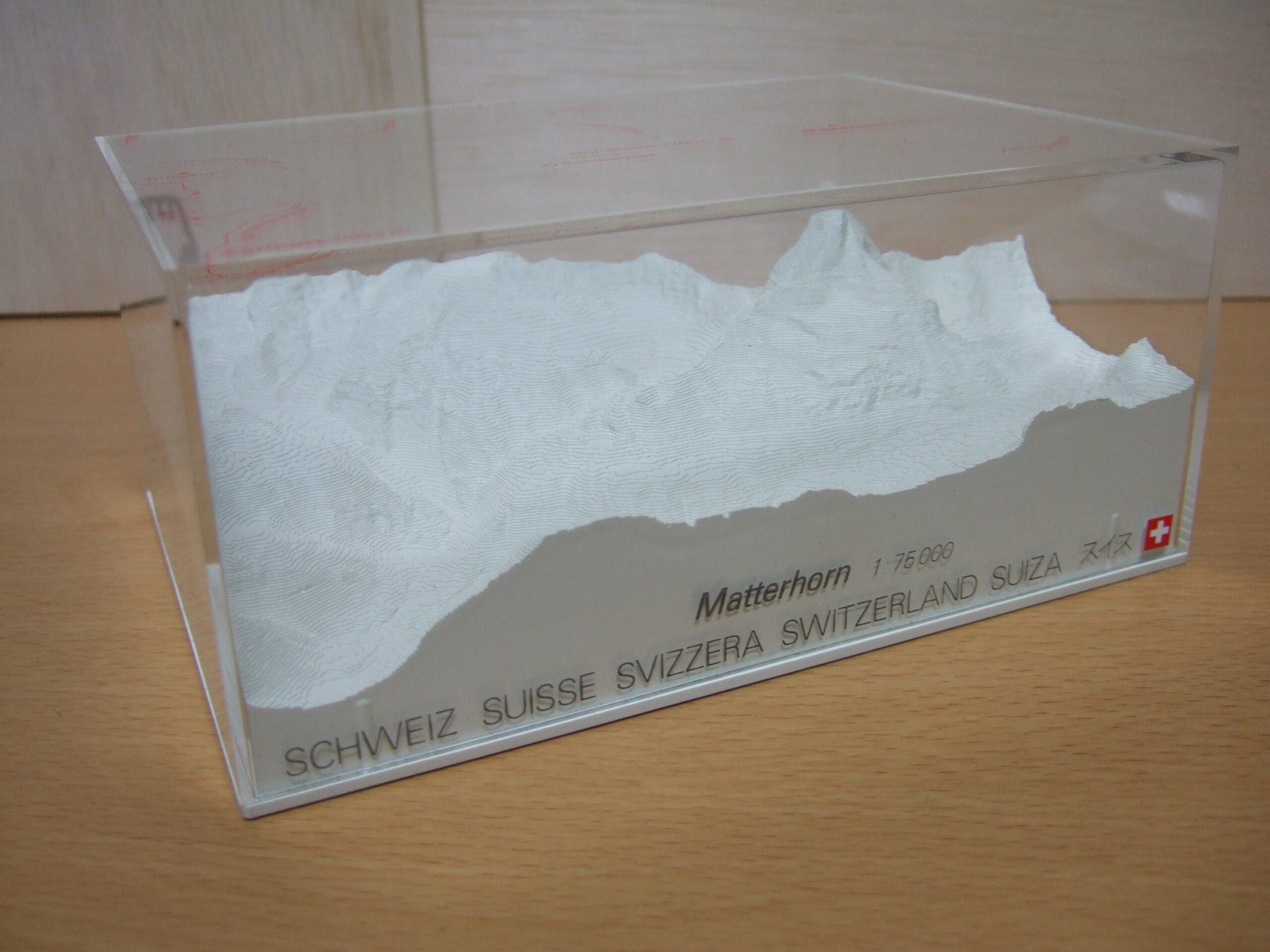キャプティブ 2022.11.18
CA43 「マッターホルン」が示唆する「キャプティブ」
目次
For those who prefer to read this column in English, the Japanese text is followed by a British English translation, so please scroll down to the bottom of the Japanese text.
大手財閥系生命保険会社から委嘱され、損害保険事業に関する経営コンサルティングをおこなっていたのは、1997年から2009年までの13年間であった。新商品開発へのサポート要請、再保険カバー等の交渉のため、大手総合商社傘下のロンドンの業務提携先の再保険ブローカー(保険仲立人)とともに、再保険会社のアンダーライター達との打ち合わせ、交渉をする必要があったため、ロンドンへ年に6回、毎回10日間ほどの出張をしていた。回数を重ねていくうちに「出張というより通勤」という印象を抱くようになっていった。
年に6回、毎回10日間であるから、「毎年60日間ロンドンに住んでいた」ということになる。航空会社のホームページにある筆者の「生涯フライト記録」を見ると、経営コンサルティングの初期段階では、中心が取引信用保険の商品開発であり、業務提携先保険会社との折衝のためオーストラリア、シドニーに10数回程出張していたことが分かる。しかし、その後は「ロンドン出張ばかり」であり、シドニーやニューヨークへの出張はほんの数回にも関わらず「ロンドンへの渡航回数は13年間で合計72回」となっている。
普通の出張なら予めメール等で「予定を相談、決定して、出張」となるが、世界の再保険を握る地であるロンドンは「アンダーライター・マーケット」、つまり「保険会社が強い市場」である。つまり「『より良い保険の引受条件の提示』を求めてアンダーライターと良好な関係を構築、維持する」ためには、「アンダーライター(保険会社)の都合を優先して訪問日程を組んでいくことが求められる市場」と言える。
このため、出張の予定期間は「1週間」という「ピンポイント」ではなく、「アンダーライターの都合に合わせるため、どうしても土日を挟んで2週間とすること」の方が多かった。それも、日本に帰国する際には、「次は2ヶ月後に」と言って、帰国するや否や「次はいついつ行くのでアポを取りたい」と連絡するのが常であった。それでも、「2週間」の「待ち受けゾーン」は必要であった。
困ったのが「土日の使い方」である。欧米では「土日は家族と一緒に」が当然であり、「土日は自分の自由時間となり旅行気分になる」が、それも数回程度までである。「ロンドンの郊外やちょっと足を伸ばしてスコットランドなど」が土日の時間つぶしになったからである。しかし、10回を超えると「行く場所が無くなってしまうこと」になり、「土日はホテルでハウスキーピングも断って、朝からTVを見て『英国語の勉強』をすること」と決め、日がな一日「英国語の勉強」をしていた。
ある時「週末はどうするの?どこかに行くのか?」と英国人の友人に聞かれた。「もうどこにも行きたいところは無いし、ホテルでいつも土日はTVを見ているよ」と返したら、「イタリアに行ってみたら?ヨーロッパの発祥地の一つだし、面白いよ、1時間半、2時間で行けるよ」と笑いながら答えてきた。
「え、1時間半?!」と思って調べてみたら、確かに「『ロンドンーイタリア・ミラノ間』は飛行機で1時間半」であった。ネットでホテルを予約、格安航空券を買って「席は先着順の飛行機」に飛び乗って、好きな絵を見にイタリアのフィレンツェやベネチアを訪れた。
数回ほど、イタリアやフランス、オランダを土日に訪れていたが、ミラノのサンタ・マリア・デッレ・グラツィエ教会にレオナルド・ダ・ヴィンチの「最後の晩餐」を見に行ったとき、ミラノ駅で「スイスのお土産」を抱えた一団に逢った。「スイスか・・」と思って調べたら、ミラノ駅からスイス方面に電車が出ていてスイスのブリーク駅まで行けば、マッターホルンのあるツェルマットに行く「氷河急行(特急)」に乗り換えることができることが分かった。こうなるとやおら「土日が愉しみ」になっていた。
こうして、2ヶ月後、初めてスイスの地を踏んだ。マッターホルンを間近に見るホテルを取り、ツェルマット駅からゴルナーグラート鉄道でマッターホルンの展望台へ向かい、壮大なアルプスを眼前に見ることができた。

ロイズビルの1階(日本では2階)から海上保険のアンダーライティング・ルームであるグラウンド・フロア(日本では1階)を見る。View from the ground floor (2nd floor in Japan) of the Lloyd’s of London building to the ground floor (1st floor in Japan), the underwriting room for marine insurance.
1.スイス
スイスは、イタリア、フランス、ドイツと国境を接している。スイス「国」として成立した経緯が今の「永世中立国スイス」の特徴をよく表わしている。スイスは「山岳地帯」であり、「大きな平野」を持たないため、小さな地域共同体が幾つも散在している地域であった。
当然、接している「強大な国家」からの影響を排除することが必要となり、小さな共同体が自治を求めて同盟を結んだのが「国家」としての始まりである。1291年、中央スイスの3つの共同体が、中部ヨーロッパで強大な勢力を誇った「ハプスブルグ家」の支配に対抗して同盟を結成したのである。その後、様々な言語や文化を持つ都市国家、農村共同体等が加わり連邦共和制が発展していった。
こういった経緯から、スイスには、スイスドイツ語、フランス語、イタリア語、ロマンシュ語の4つの公用語がある。スイスの人口約800万人の6割が母国語とするのが、スイスドイツ語である。「スイスドイツ語」は、ドイツ語の方言であるが、ドイツのドイツ語とはかなり異なっているため、「ドイツ人でも聞き取りは難しい」と言われている。
グローバル・リンクがキャプティブ事業で業務提携をしている世界最大級の再保険会社の招きで、ドイツ南部、ミュンヘンのビール祭(オクトーバーフェスト)を数度訪れたが、いつも感じたのはオクトーバーフェストに集まる人達が着る「民族衣装」が、どう見ても日本人の目からは「スイスの民族衣装」に見えたことである。

ヨーロッパでは「都市」が長らく「国家そのもの」であり「都市同士の戦い」が「国と国との戦い=戦争」と呼ばれた歴史がある。イタリアは、ローマ帝国時代、広大な「国土」を有していたが、その後は「都市が国家」の時代が長らく続き、現在のイタリア共和国の前身となる「イタリアの統一国家」、「イタリア王国」が誕生したのは、実に1861年のことであった。
ホテルから見たマッターホルン
Matterhorn from the hotel.
2.マッターホルン
スイス政府観光局の公式WEBサイトによると、マッターホルンの標高は4478mであり、スイスとイタリアの国境にそびえる山である。麓の 標高1640mのツェルマットからもよく見えるが、ゴルナーグラート登山鉄道に約40分揺られると、マッターホルン、広大な氷河を有するアルプスの絶景が広がる標高3089mのゴルナーグラート展望台に辿り着くことができる。
マッターホルンという名称は、ドイツ語で牧草地を表す「matt」と、山頂を表す「horn」から来ている。雄大な絶景を見て、「どうしてこんな険しい情景が形成されたのだろうか」とふと思って、ホテルでツェルマットの観光資料を見たら、次の様に書かれていた。
2億年前、「パンゲア大陸」が分裂し始め、アフリカ大陸が、1億年前にヨーロッパ大陸へ移動を始め、ヨーロッパと衝突、6000万年前頃から衝突されたヨーロッパ大陸がアフリカ大陸に沈み込む際に盛り上がってできた地形が「アルプス」である。
「アフリカ大陸が移動してヨーロッパ大陸にぶつかってできたのか」と思ったが、当時は、「取引信用保険」や「会社役員賠償責任保険」の商品開発が仕事の中心であったため、キャプティブ事業を開始して事業の中核となった、このプレート移動によって起きる地震リスクに関心を持つことはなかった。
3.アルフレート・ヴェーゲナー
アルプスを誕生させることになった「大陸の移動」に理論的な裏付けを与える「プレートテクトニクス理論(大陸移動説)」は、中学、高校の教科書では、「ドイツの気象学者が世界地図を見ていて思いついた」程度にしか書かれていない。
事実、その人、アルフレート・ヴェーゲナーは、世界地図を見ていて、南大西洋を挟んで、「南アメリカ大陸の海岸線とアフリカ大陸の海岸線がよく似ていることに気づき、これが大陸移動説を生み出すアイデアになった」と記しているが、 1912年フランクフルトで開かれたドイツ地質学会で初めてこの「大陸移動説」を発表した。
「大陸と海洋の起源」(アルフレッド・ウェゲナー(著) 竹内 均(訳) 鎌田 浩毅(解説) 講談社(刊))を読むと、100年以上前、ウェゲナーは当時入手できる限りの科学的データを基にして、緻密な理論を展開していったのが良く理解できるが、この最初の発表の後、ウェゲナーは4回も改訂版を出しているにもかかわらず、学会では、「気象学者の言うことは・・」と彼の説は無視され続けた。後年、「プレートテクトニクス理論」として完成する説であり、氷河の分布や地質等、様々な理論的証拠があったが、当時の人たちは、「大陸が動くことなどあり得ない」と一笑に付していたからである。
同書の巻末にある、鎌田 浩毅 京都大学名誉教授の「解説」には次の言葉がある。
世界地図を広げると、地球のでき方に関して様々なことが読みとれる。大西洋に目をやると南アメリカのブラジル東部の凸部が、アフリカのコンゴ西部の凹部と合わさるように見える。同様に、南アメリカ東部とアフリカ西部の海岸の出入りが、ジグソーパズルにでもなっているかのようだ。ウェゲナーは大西洋をはさむ大陸の海岸線が似ているという事実に対して、実証科学的に着目した。「地形」がだいたい合うことだけでなく、地盤をつくる「地質」も連続することに気づいたのである。すなわち、二次元の平面上の類似性から三次元の地下構造へ視点が広がったのだ。たとえば、北アメリカ東部のアパラチア山脈が、大西洋を越えてスコットランドやスカンジナビア半島につながっていることを確認し、大陸移動説を導いていったのである。
1880年に生まれたヴェーゲナーは、1912年の学会発表に続き1915年に発表した著書「大陸と海洋の起源」のなかで「大陸移動説」を主張した。しかし、ヴェーゲナーの専門は気象学であり、地質学は専門外であるということから「門外漢の説」として無視された。しかし、彼は挫けず、1919年「大陸と海洋の起源」第2版、1922年第3版、そして1929年には第4版と合計4回も出版した。
この最後の第4版には、前述した「すべての大陸は『パンゲア』(と彼が命名した)という一つの巨大大陸であったが、約2億年前に分裂、移動して現在の四大陸となった」とする説が記されている。多くのデータがあったにも関わらず、彼の説は無視された。ようやく日があたり、現在では「地球物理学の定説」となった「プレートテクトニクス理論」が固まったのは彼の発表から50年後、1960年代後半であった。

ツェルマットで購入した「『Reliorama』というスイス製の精密山岳模型(マッターホルン)」。
This is a “Swiss-made precision mountain model (Matterhorn) called ‘Reliorama'” bought in Zermatt.
今回のまとめ
「大陸と海洋の起源」(アルフレッド・ウェゲナー(著) 竹内 均(訳) 鎌田 浩毅(解説) 講談社(刊))」巻末の鎌田 浩毅 京都大学名誉教授の「解説」には次のような文章がある。
ウェゲナーが超大陸がかつて存在したことを示唆する地質学上の証拠を次々と提示したにもかかわらず、地球物理学者たちは大陸移動説を全面否定した。加えて、彼らは海底を構成する物質は非常に硬いものであると考えていた。したがって、硬い大陸が同じように堅固な海底の上を移動するアイデアは、到底承服できるものではなかったのである。
実は、大陸が漂う現象を理解するには、何千万年、何億年という地質学的な時間の長さを考慮しなければならない。すなわち、非常に長い時間をかければ、岩石のように硬い物質も、ゆっくりと流れることが可能となる。これは「レオロジー」という物質の変形と流動を扱う新しい学問だが、ウェゲナーの時代にはまだ十分ではなかった。
学界の権威として君臨していたジェフリーズらが認めないにもかかわらず、ウェゲナーは自説を曲げなかった。彼は次第に同業者から変人扱いされるようになり、大陸移動説を支持する学者が皆無になった。そして半世紀ものあいだ地球科学の表舞台から姿を消すこととなる。
グローバル・リンクは「キャプティブ事業」の開始以来、「地震リスクへの対応を主目的とするキャプティブ」の設立を推奨し続けている。
地震リスク以外の様々なリスクであれば、世界的にも評価の高い日本の損害保険会社であれば相応の保険料で十分に補償できる。しかし、地震リスクは、日本の損害保険会社の引受力(キャパシティ)では、企業が求める補償を十分に受けることは困難であり、さらにそのコスト(保険料)はかなりのレベルとなるため、「キャプティブを設立して世界的規模を有する信用のおける海外の再保険会社から引受力(キャパシティ)を得た方が、遙かに廉価な保険料で、遙かに十分な金額の地震リスクの補償を受けることができる」からである。
しかし、リスクマネジメントに先進的な一部の企業を除いて、「キャプティブ=面倒くさい=付き合いのある損保に任せた方が簡単である」ということからか、「南海トラフ巨大地震」に関する切迫した情報を政府が幾度となく発表しても、また富士山噴火の可能性に関する報道が度々なされても、キャプティブを活用してリスクマネジメントに積極的に取り組もうとする企業の数は、欧米のそれと比べると遙かに少ない。
「その日」は眼前まで来ているかもしれないにもかかわらず。「後の祭りとならないように」と切に願うばかりである。東日本大震災の時に多く言われた「想定外」を2度と使わないでいいように、と。
執筆・翻訳者:羽谷 信一郎
English Translation
Captive (CA) 43 -“Captives” as suggested by the Matterhorn
I was commissioned by a major conglomerate life insurance company to provide management consulting services in the non-life insurance business for 13 years, from 1997 to 2009. I travelled to London six times a year for about 10 days each time for meetings and negotiations with a reinsurance broker affiliated with a major general trading company with whom I had a business alliance, in order to request support for new product development, negotiate reinsurance cover, etc. However, as the number of trips increased, I began to feel that they were more like commutes than “business trips”.
As the number of trips increased, I began to feel that they were more like commutes than ‘business trips’.
Six times a year, for 10 days each time, this meant that I “lived in London for 60 days every year”. The author’s “lifetime flight record” on the airline’s website shows that in the early stages of my management consulting career, the main focus of my work was the development of transaction credit insurance products, and I travelled to Sydney, Australia, more than a dozen times to negotiate with the insurance companies with whom I had business relationships.
However, since then, it has been “only business trips to London”, and although there were only a few business trips to Sydney and New York, “the total number of trips to London was 72 in 13 years”.
Ordinary business trips would be made after discussing and deciding the schedule beforehand by e-mail, but London, the world’s reinsurance centre, is an “underwriter’s market”, i.e. a market where insurers are strong. In other words, in order to “build and maintain good relationships with underwriters in search of better insurance underwriting conditions”, it can be said that “the market requires that the schedule of visits be arranged with priority given to the convenience of the underwriters (insurance companies)”.
For this reason, the scheduled duration of business trips was not “pinpointed” at “one week”, but more often at “two weeks, inevitably with weekends in between, to suit the underwriter’s convenience”. It was also the case that when I returned to Japan, I would always say “Next time in two months” and as soon as I returned to Japan, I would contact them to make an appointment for when I would be next there. Nevertheless, a “two-week” “waiting zone” was still necessary.
The problem was the “use of Saturdays and Sundays”. In Europe and the US, it is natural to “spend Saturdays and Sundays with the family”, and Saturdays and Sundays are “my free time and I feel like travelling”, but only on a few occasions. This is because “the suburbs of London and Scotland” became a way of passing the time on Saturdays and Sundays. However, after more than ten times, “I had no more places to go” and I decided to “refuse housekeeping at the hotel on Saturdays and Sundays and watch TV from the morning to ‘study British'”, so I spent all day long “studying British”.
One day, I was asked, “What are you going to do at the weekend? Are you going somewhere?” I was asked by a British friend. I replied, “I don’t have anywhere to go anymore, I usually stay at the hotel and watch TV on Saturdays and Sundays”, to which he replied, “Why don’t you go to Italy? It’s one of the cradles of Europe, it’s interesting, and you can get there in an hour and a half or two hours”, he replied with a laugh.
“Oh, an hour and a half?” I looked it up and found that it was indeed “one and a half hours by plane between London and Milan, Italy”. I booked a hotel online, bought a cheap airline ticket, jumped on a “first-come, first-served flight” and visited Florence and Venice in Italy to see my favourite paintings.
When I went to see Leonardo da Vinci’s Last Supper in the Church of Santa Maria delle Grazie in Milan, I met a group of people carrying ” Swiss souvenirs” at Milan station. I thought, “Switzerland…”, and when I checked, I found out that there was a train from Milan to Switzerland, and that if I went to Bleek station in Switzerland, I could change to the Glacier Express train to Zermatt, where the Matterhorn is located. This made the weekends more and more enjoyable.
Two months later, I stepped on Swiss soil for the first time. I booked a hotel with a close view of the Matterhorn and took the Gornergrat train from Zermatt station to the Matterhorn lookout point, where I could see the magnificent Alps right in front of me.
1. Switzerland
Switzerland shares borders with Italy, France and Germany. The way in which Switzerland was established as a ” country ” is well illustrated by the characteristics of today’s ” permanent neutral Switzerland “. Switzerland was a mountainous country with no large plains, and was therefore a region of several small, scattered communities.
Naturally, it became necessary to exclude influence from the “powerful states” with which they came into contact, and small communities formed alliances in search of autonomy, which is how they began as ” states”. In 1291, three communities in central Switzerland formed an alliance against the Habsburgs, who were the dominant power in central Europe. The federal republic was later joined by city states, rural communities and others with different languages and cultures.
As a result, Switzerland has four official languages: Swiss German, French, Italian and Romansh. Swiss German is the mother tongue of 60% of the country’s population of around eight million. Swiss German is a dialect of German, but is so different from the German spoken in Germany that it is said to be difficult even for Germans to understand.
At the invitation of one of the world’s largest reinsurance companies, with whom Global Link has a business alliance in the captive business, I have visited the Oktoberfest beer festival in Munich in southern Germany several times and have always felt that the “folk costumes” worn by the Oktoberfest-goers looked, to the Japanese eye, like “Swiss folk costumes”. In Europe, the “cities” have long been a part of the “Swiss national costume”.
In Europe, cities have long been the nation states themselves, and battles between cities have been called “wars between nations”. In Italy, the Roman Empire had a vast area of land, but the era of “cities as states” continued for a long time afterwards, and it was not until 1861 that the Kingdom of Italy, the united Italian state that was the forerunner of the current Italian Republic, was born.
2. Matterhorn
According to the official website of the Swiss National Tourist Office, the Matterhorn rises to an altitude of 4,478 m above sea level on the Swiss-Italian border and is clearly visible from Zermatt (1,640 m above sea level). A 40-minute ride on the Gornergrat mountain railway takes you to the Gornergrat Observatory at 3089 m above sea level, which offers a spectacular view of the Matterhorn and the vast glacier-covered Alps.
The name Matterhorn comes from the German words “matt ” for meadow and ” horn ” for summit. When I looked at the tourist information on Zermatt at the hotel, I found the following information.
200 million years ago, the Pangaea continent began to break up, and the African continent began to move towards the European continent 100 million years ago, colliding with Europe.
At the time, the main focus of my work was the development of products for ” trade credit insurance” and “company directors’ and officers’ liability insurance”, so I had no interest in plate movement or the seismic risks, etc., caused by this movement, which started the captive business and became the core of that business.
3. Alfred Wegener
The “plate tectonics theory (theory of continental drift)”, which provides theoretical support for the “continental drift” that led to the creation of the Alps, is only mentioned in secondary school and high school textbooks to the extent that “a German meteorologist came up with the idea while looking at a map of the world”.
In fact, Alfred Wegener, who was looking at a map of the world, noted that across the South Atlantic Ocean, “I noticed that the coastlines of the South American continent and the African continent were very similar, and this was the idea that gave rise to the theory of continental drift”. He presented this ‘continental drift theory’ for the first time at the German Geological Congress in Frankfurt in 1912.
The book ” The Origin of Continents and Oceans” (Alfred Wegener (author), Hitoshi Takeuchi (translator), Hiroki Kamada (commentary), Kodansha, published by Kodansha, shows how Wegener developed his elaborate theory more than 100 years ago, based on the best scientific data available at the time. After this initial publication, Wegener’s theory continued to be ignored by the academic community, despite the fact that he revised it four times, saying that ” what the meteorologists say…”. This was because, although the theory would later be completed as the ‘plate tectonics theory’ and there was various theoretical evidence, such as the distribution of glaciers and geology, people at the time laughed it off, saying that it was impossible for the continents to move.
In the “Commentary” by Professor Emeritus Hiroki Kamata, Kyoto University, at the end of the book, the following words are found.
If you open up a map of the world, you can read many things about how the earth was formed. Looking at the Atlantic Ocean, the convex part of eastern Brazil in South America appears to merge with the concave part of western Congo in Africa. Similarly, the in and out of the coasts of eastern South America and western Africa seem to be a jigsaw puzzle. Wegener focused his empirical scientific attention on the fact that the coastlines of the continents across the Atlantic Ocean are similar. Not only did he realise that the ” topography ” was roughly the same, but also that the geology, which makes up the ground, is continuous. In other words, the perspective was broadened from similarities on a two-dimensional plane to a three-dimensional subsurface structure. For example, he confirmed that the Appalachian Mountains in eastern North America were connected across the Atlantic Ocean to Scotland and the Scandinavian Peninsula, leading to the theory of continental drift.
Born in 1880, Wegener argued for the theory of continental drift in his book ” The Origin of Continents and Oceans”, published in 1915, following a conference presentation in 1912. However, it was disregarded as an ” outsider’s theory”, as Wegener’s specialty was meteorology and geology were not his area of expertise. He was undeterred, however, and published the second edition of The Origin of Continents and Oceans in 1919, the third edition in 1922, and the fourth edition in 1929, a total of four times.
The fourth and final edition contained the aforementioned theory that “all the continents were one giant continent, ‘Pangaea’ (as he named it), which broke up and migrated about 200 million years ago to become the four continents we know today”. Despite much data, his theory was ignored. It was not until the late 1960s, 50 years after his publication, that the ” plate tectonics theory” finally came to light and solidified into what has now become the “established theory of geophysics”.
Summary of this issue
In the “Commentary” by Professor Emeritus Hiroki Kamata of Kyoto University at the end of “The Origin of Continents and Oceans” (Alfred Wegener (author), Hitoshi Takeuchi (translator), Hiroki Kamada (commentary), Kodansha Ltd), the following text appears.
Despite Wegener’s presentation of a series of geological evidences suggesting the former existence of supercontinents, geophysicists rejected the continental drift theory entirely. In addition, they believed that the materials comprising the seafloor were very hard. Therefore, the idea of hard continents moving over an equally hard seabed was untenable.
In fact, to understand the phenomenon of continental drift, one has to take into account geological timescales of tens or hundreds of millions of years. In other words, over very long periods of time, even materials as hard as rocks can flow slowly. This is the new discipline of ‘rheology’, which deals with the deformation and flow of matter, but it was not yet sufficient in Wegener’s time.
Despite the disapproval of Jeffreys and others, who were the reigning authorities in the academic world, Wegener did not bend to his own theories. He gradually came to be regarded as a crank by his peers, and none of the scholars supported the theory of continental drift. He disappeared from the scene of earth sciences for half a century.
Since the launch of the Captive business, Global Link has continued to recommend the establishment of a ” captive whose main purpose is to deal with seismic risk”. I hope that the term “unexpected”, which was said a lot during the Great East Japan Earthquake, will never be used again.
Various risks other than earthquake risk can be adequately covered by Japanese non-life insurance companies, which have a good reputation worldwide, at reasonable premiums. However, for earthquake risk, it is difficult for Japanese non-life insurers to provide sufficient coverage for the risks that companies seek with their underwriting capacity, and the costs (premiums) are substantial. It would be far cheaper to establish a captive and obtain underwriting capacity from a reputable foreign reinsurer with a global scale, which would provide a far more adequate amount of earthquake risk coverage at a far lower premium cost”.
However, with the exception of a few companies that are advanced in risk management, even though the government has repeatedly released information on the imminent threat of a huge Nankai Trough earthquake and there have been frequent reports on the possibility of a Mt Fuji eruption, perhaps because “captives = hassle = easier to leave to the non-life insurers with whom you have a relationship”. Fuji eruption, the number of companies that actively engage in risk management using captives is far fewer than in Europe and the US.
The day may be just around the corner. We can only hope that it will not be a relic of the past.
Author/translator: Shinichiro Hatani

